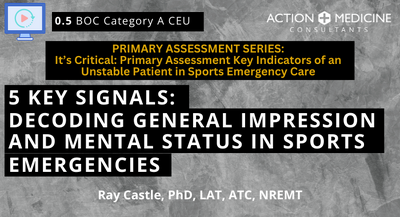AI Chat Bot
5 Key Signals: Decoding General Impression and Mental Status in Sports Emergencies › Learning Material
Presentation (Video)
Updated Jan 22, 2024
Copyright © 2025 Action Medicine Consultants, LLC
___MESSAGE___
___MESSAGE___


